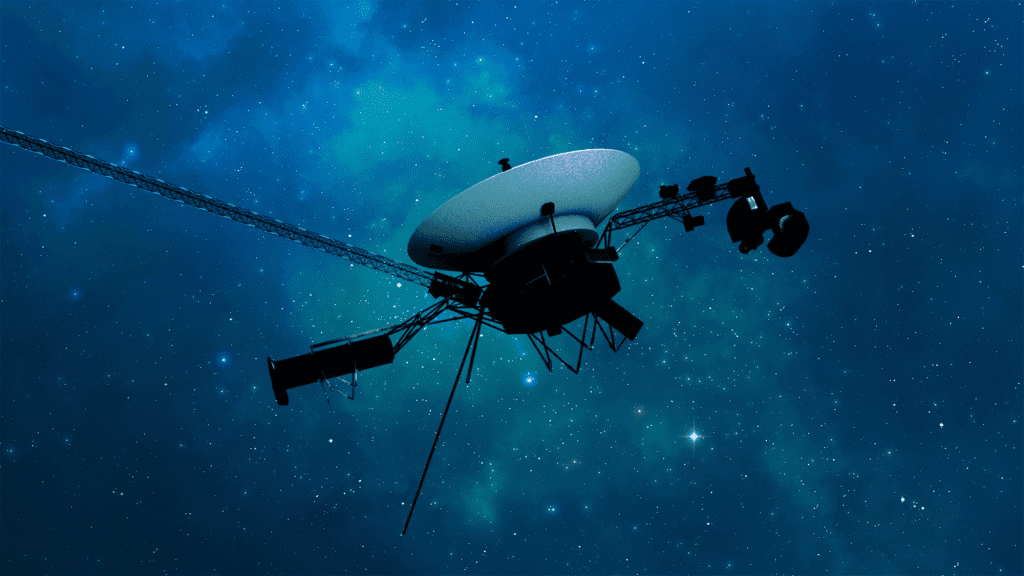For the first time since November 2023, NASA is getting meaningful messages from its Voyager 1 probe. The agency has been fixing a problem that caused the probe to send jumbled messages instead of scientific data. The probe is now coherent, but according to NASA, the next step is to enable Voyager 1 to start sending usable science information again.
Voyager 1 is transmitting faulty data, but NASA is addressing the issue.]
Alongside its twin Voyager 2, these probes are the only spacecraft to ever travel in interstellar space–or the region between stars beyond the influence of the sun. Both Voyager 1 and Voyager 2 probes launched in 1977. Their mission initially included detailed observations of Jupiter and Saturn, but it continued on exploring the outer reaches of the solar system. Voyager 1 became the first spacecraft to enter interstellar space in 2012. Voyager 2 followed Voyager 1 into interstellar space in 2018.
On November 14, 2023, Voyager 1 stopped sending readable science and engineering data back to Earth for the first time. Mission controllers could tell that the spacecraft was still receiving their commands and otherwise operating normally, so they were not sure why it was sending back such incoherent information. In March, the Voyager engineering team at NASA’s Jet Propulsion Laboratory (JPL) confirmed that the issue was related to one of the spacecraft’s three onboard computers, called the flight data subsystem (FDS). The FDS packages science and engineering data before it’s sent to Earth so that NASA can use it.
The team pinpointed the code responsible for packaging the spacecraft’s engineering data. The glitch was only on one single chip representing around 3 percent of the FDS memory, according to Space. They were unable to repair the chip. On April 18, JPL engineers migrated the code to other portions of the FDS memory. This required splitting the code up into several sections to store them at multiple locations in the FDS. The code was adjusted to work from multiple locations as one cohesive process and references to its new directories were updated.
“When the mission flight team heard back from the spacecraft on April 20, they saw that the modification worked: For the first time in five months, they have been able to check the health and status of the spacecraft,” NASA wrote in an update on April 22.
When Voyager 1 goes dark, what comes next?]
As of now, the usable data returned so far relates to how the spacecraft’s engineering systems are working. The team plans more software repair work in the next several weeks so that Voyager 1 can send valuable science data about the outer reaches of the solar system that is readable once again. As of now, Voyager 2 is still operating normally.









